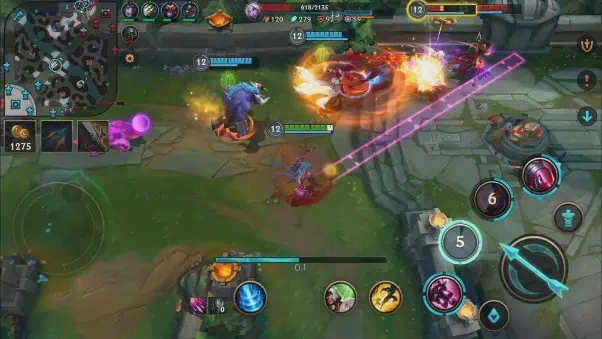The world of competitive gaming has witnessed a meteoric rise in recent years, with League of Legends (LoL) emerging as one of the most popular and lucrative esports titles. As the level of competition intensifies, analyzing key metrics becomes essential in evaluating the skills and performance of professional players.
In this article, we will explore the fundamental metrics used to assess the prowess of LoL players, shedding light on their significance and impact within the esports ecosystem.
1. Win Rate
Win rate stands as a primary metric to evaluate pro players in LoL. It reflects the percentage of games won out of the total games played, providing a quick overview of a player’s ability to secure victories. While win rate alone may not paint a complete picture, it serves as an important starting point to identify consistently successful players.
2. KDA Ratio
The Kill-Death-Assist (KDA) ratio measures a player’s effectiveness in engagements. It is calculated by adding the number of kills and assists and dividing it by the number of deaths. A high KDA ratio demonstrates a player’s ability to secure kills while minimizing unnecessary deaths. This metric showcases the individual’s impact on the game and highlights their contributions to team fights and objective control.
3. Creep Score (CS) and Gold Differential
CS refers to the number of minions a player kills or “last hits” during the laning phase in LoL scores. A high CS indicates strong farming skills, allowing players to accumulate gold and experience.
The gold differential, which compares a player’s gold to their opponent’s, showcases the individual’s ability to gain advantages in the early stages of the game. A positive gold differential indicates a player’s ability to outfarm their opponent, giving them an edge in terms of itemization and map control.
4. Vision Control
Vision control is a critical aspect of LoL gameplay, and pro players who excel in this area often contribute significantly to their team’s success. Vision score reflects the number of wards placed, destroyed, and controlled by a player. A higher vision score demonstrates a player’s ability to provide valuable information to their team, maintain map control, and enable successful plays through vision denial or initiation.
5. Damage Per Minute (DPM)
DPM measures the average damage output by a player over the course of a game. This metric allows analysts to assess the impact of a player in team fights and skirmishes. A high DPM suggests that a player consistently deals damage and contributes to securing kills or objectives. It also sheds light on a player’s positioning, decision-making, and ability to optimize their champion’s kit.
6. Champion Pool and Flexibility
The versatility of a player’s champion pool is another crucial aspect of their evaluation. Successful pro players demonstrate proficiency across multiple champions, enabling strategic flexibility during draft phases. Adapting to the ever-changing meta and having a deep understanding of various playstyles are essential for players to remain competitive and valuable to their teams.
7. Communication and Teamwork
While the above metrics focus on individual performance, communication and teamwork are equally vital in evaluating a player’s value. LoL is a team-based game, and effective communication, shot-calling, and synergy are crucial for success. Pro players who excel in these areas contribute to the overall cohesion and coordination of their team, ultimately leading to victories.
Conclusion
As the professional LoL scene continues to grow, analyzing key metrics becomes paramount in evaluating the skills and contributions of pro players. Metrics such as win rate, KDA ratio, CS, gold differentials, vision control, DPM, champion pool, and teamwork all play a role in providing a comprehensive assessment.
However, it’s important to remember that these metrics should be analyzed in conjunction with other contextual factors, such as the strength of the opposition, game strategy, and the player’s role within their team.
Ultimately, the world of LoL esports relies on the continuous evaluation and improvement of players. By understanding and analyzing these key metrics, we gain valuable insights into the performances that shape the competitive landscape, and pro players can strive to reach new heights of success in the ever-evolving world of League of Legends.

